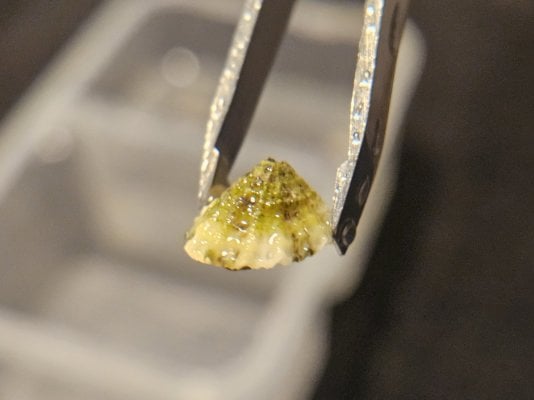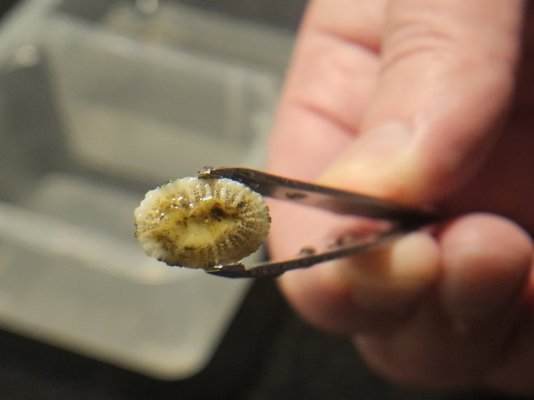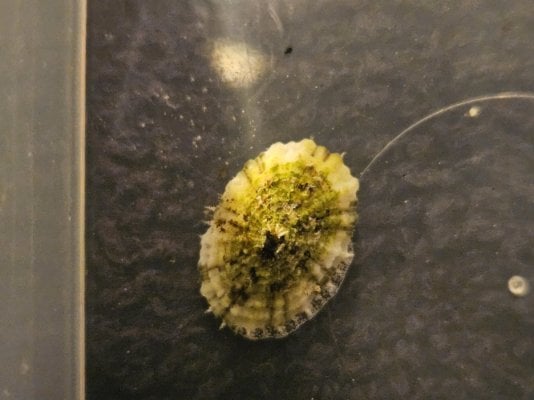I wanted to post this for some visibility as I do not believe it’s too well known that certain limpets will eat acros. I believe they are sourced from the gulf. I have only had them in my last 2 builds (started in my 25 > upgraded to 150 and transferred rock) and I have had multiple orders of gulf live rock.
I have actively seen them eating the acros in both systems. They are 1/2” or so when they start eating the acros. Symptoms of limpet damage are tissue stripped but not quite all the way. If you look close and still have polyps but the color is 90% gone and maybe speckled looking, you may have them. You have to hunt them once the lights have been off for a while as they hide during the day. They blend in very, very well and I usually stab them through the hole in the top of their shell and then let the crabs eat them.
I’ll update with a pic if I find any more.
I forgot these were an issue and constantly had recession in some of my colonies on this build and kept thinking it was chem related and just could never get ahead of it. Last week, I wanted to see my cucumber stretched out so I got out the flashlight and then saw 2 of them crawling on one of my colonies and started hunting them and have killed 9 large ones so far. I will add that they really have favorite acros and won’t touch some of them.
I have actively seen them eating the acros in both systems. They are 1/2” or so when they start eating the acros. Symptoms of limpet damage are tissue stripped but not quite all the way. If you look close and still have polyps but the color is 90% gone and maybe speckled looking, you may have them. You have to hunt them once the lights have been off for a while as they hide during the day. They blend in very, very well and I usually stab them through the hole in the top of their shell and then let the crabs eat them.
I’ll update with a pic if I find any more.
I forgot these were an issue and constantly had recession in some of my colonies on this build and kept thinking it was chem related and just could never get ahead of it. Last week, I wanted to see my cucumber stretched out so I got out the flashlight and then saw 2 of them crawling on one of my colonies and started hunting them and have killed 9 large ones so far. I will add that they really have favorite acros and won’t touch some of them.























